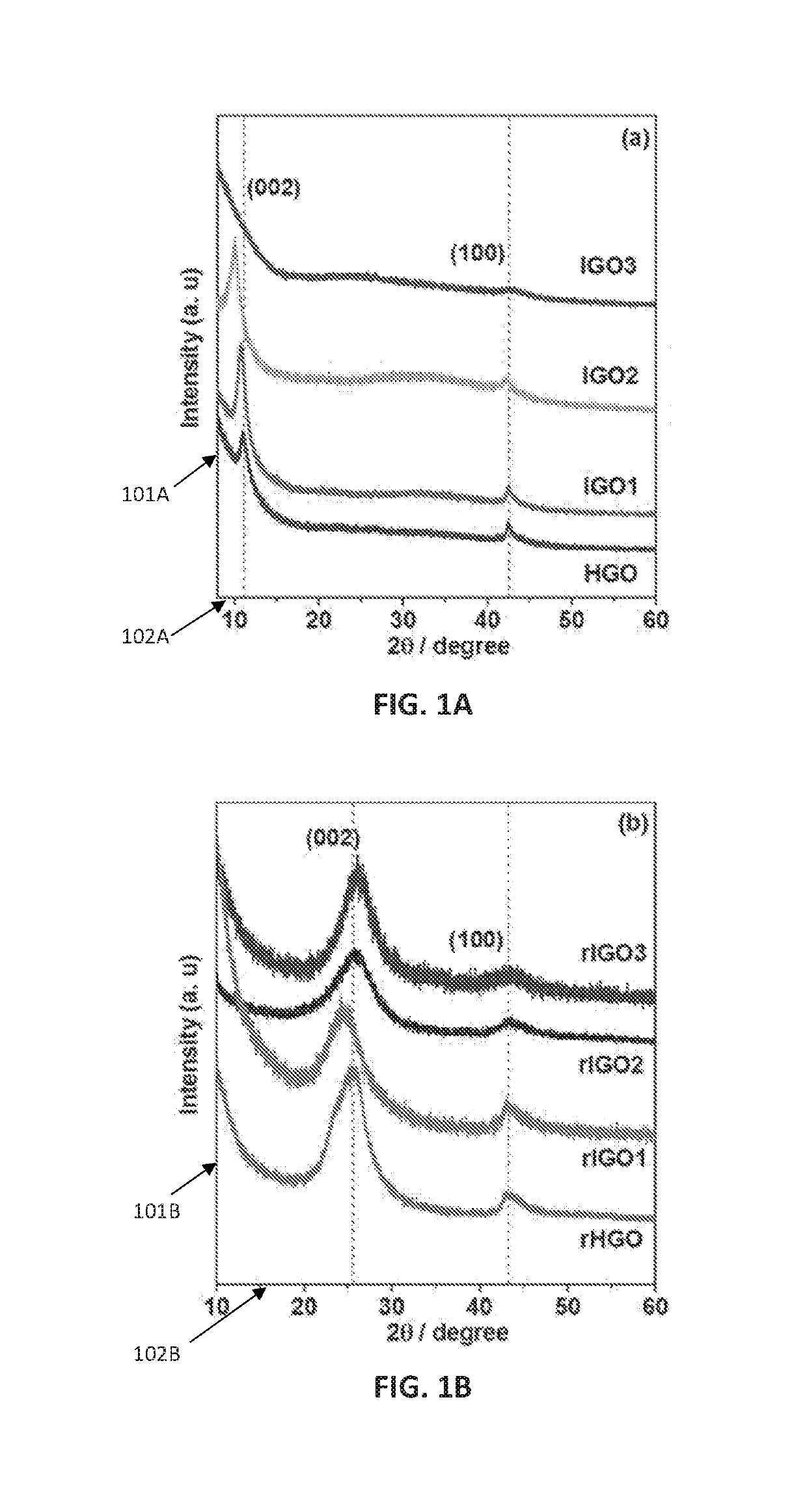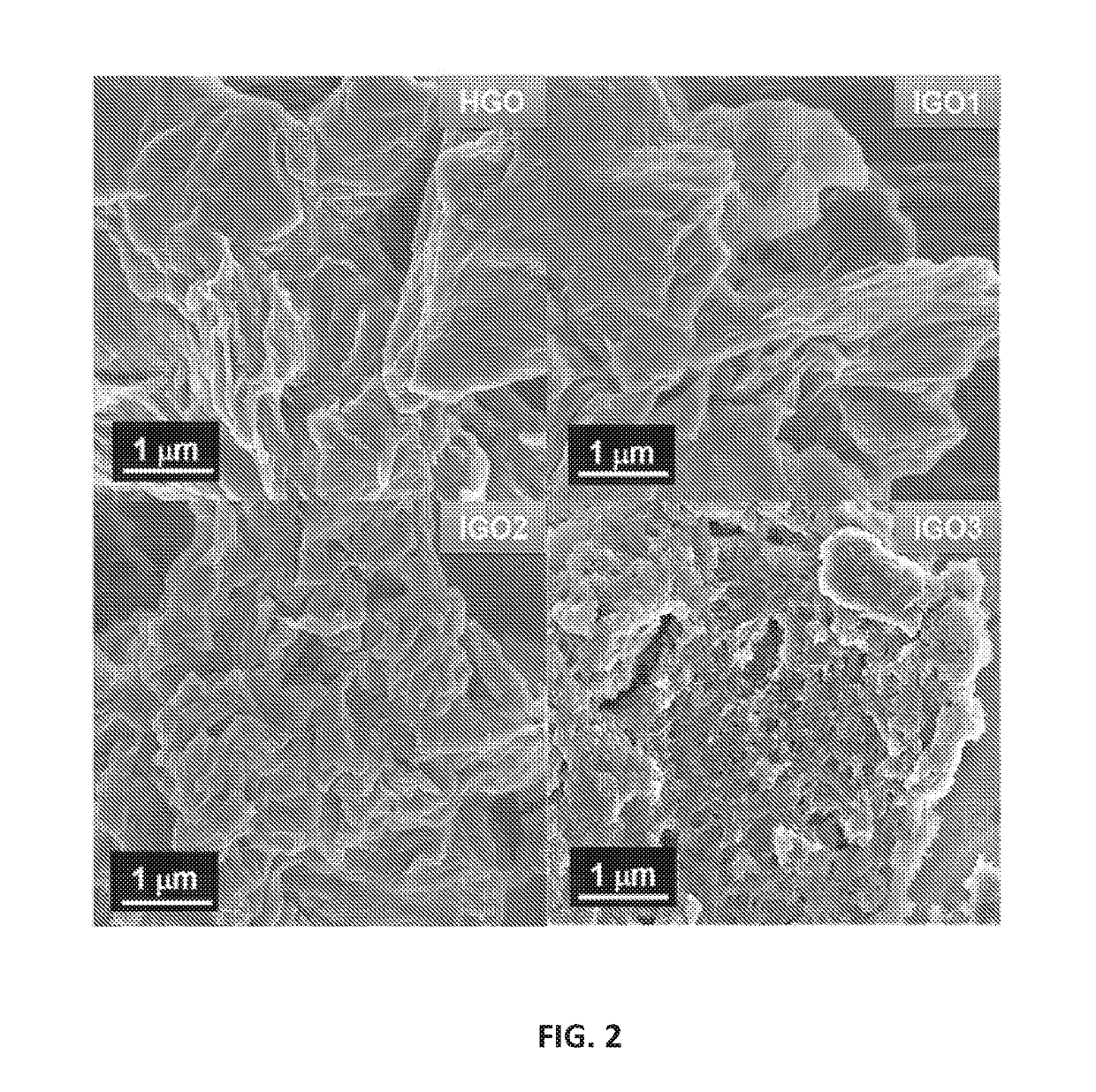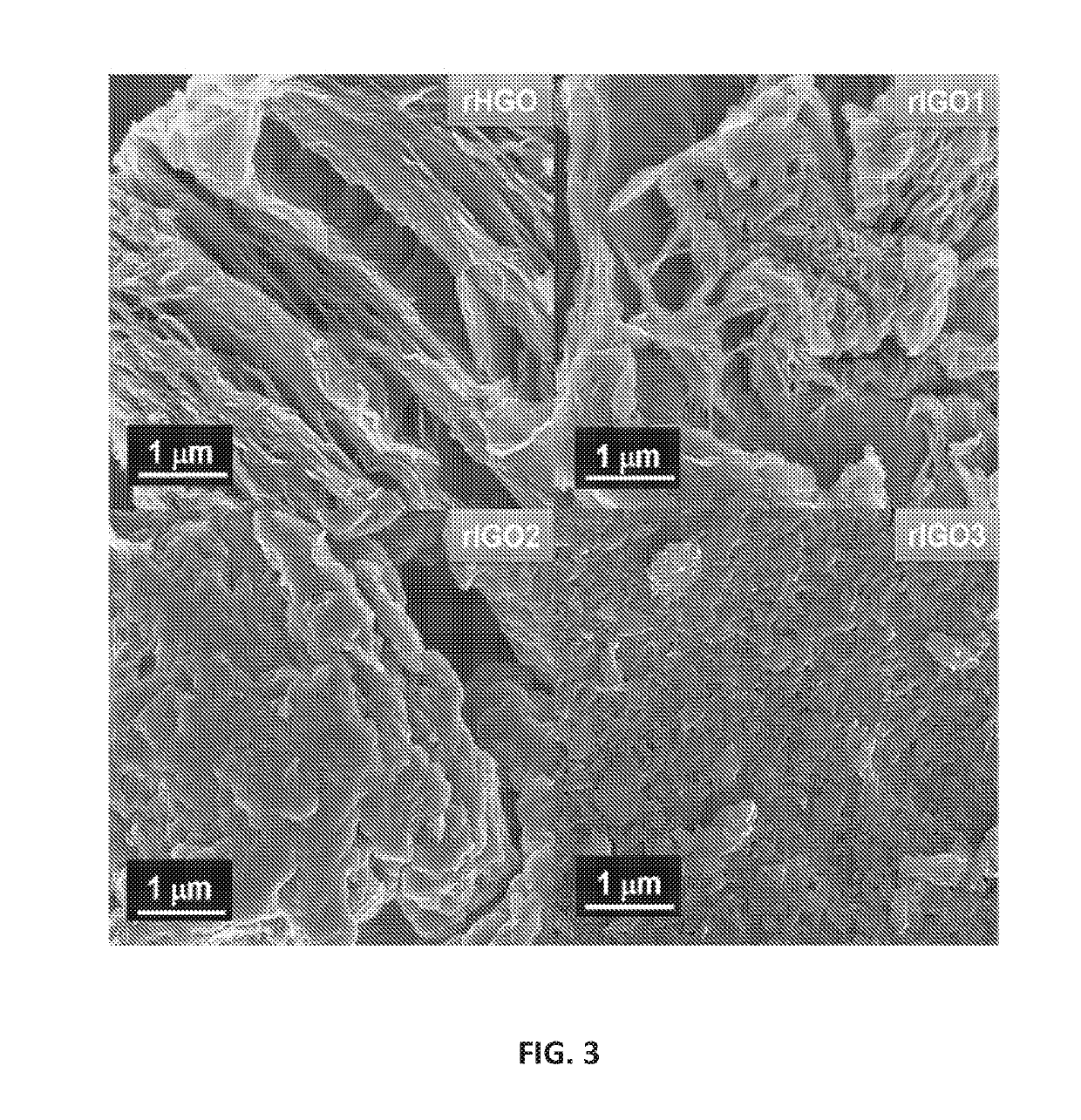Graphene oxide particles and method of making and using them
a graphene oxide and particle technology, applied in the field of graphene oxide particle production, can solve the problems of woefully inefficient and ineffective systems in their performance and economic aspects, battery life is very limited, and most batteries (even rechargeable ones) tend to lose their ability to hold electrical charges, etc., to achieve high purity, improve performance, and improve efficiency
- Summary
- Abstract
- Description
- Claims
- Application Information
AI Technical Summary
Benefits of technology
Problems solved by technology
Method used
Image
Examples
example 1
of Graphene Oxides (IGO1, IGO2, and IGO3)
[0089]Graphene oxides were produced according to the following method, which are exemplary. Times, temperatures and pHs useful for the disclosed method of graphene oxide production are not limited to the times, temperatures and pHs used in the examples herein.
[0090]Graphite powder (Sigma-Aldrich, catalog #332461) (3.0 g) was added to a mixture of 40 mL H3PO4 and 360 mL concentrated H2SO4, and the resulting suspension was stirred in an ice bath for 2 h, and then KMnO4 was added according to Table 1, below.
TABLE 1SampleGraphite (g)H3PO4 (mL)H2SO4 (mL)KMnO4 (g)IGO13.0403609.0IGO23.04036018IGO33.04036027
[0091]Each resulting mixture was stirred for 1 h in an ice bath, and then 100 mL water was added to each mixture. After stirring for 10 min, each mixture was removed from the ice bath and then heated to 90° C. in an oil bath for 60 min. After cooling to room temperature, Na2CO3 was added until the pH of the mixture reached about 7.2. An excess of ...
example 2
of a Comparative Graphene Oxide (HGO)
[0092]A comparative graphene oxide was produced according to Hummer's method. Graphite powder (Sigma-Aldrich, catalog #332461) (3.0 g) was added to a mixture of 1.5 g NaNO3 in 75 mL H2SO4, and the resulting suspension was stirred in an ice bath for 2 h, and then 9.0 g KMnO4 was added.
[0093]The resulting mixture was stirred for 1 h in an ice bath, and then 100 mL water was added. After stirring for 10 min, the mixture was removed from the ice bath and then heated to 90° C. in an oil bath for 1 h, and after cooling to room temperature, Na2CO3 was added until the pH of the solution reached about 7.2.
[0094]An excess of ethanol was added, and the solution was centrifuged at 9000 rpm. The collected solids were washed with HCl, then water, and then ethanol until the effluent reached pH of about 7, and then the solids were isolated.
example 3
mal Reduction of Graphene Oxides
[0095]Sample of about 50 mg of each graphene oxide (IGO1, IGO2, IGO3, and HGO) were placed in 40 mL aliquots of water and the resulting suspensions were ultrasonicated for 15 min, and then subjected to 180° C. for 24 h. Solids from each sample were isolated by filtration, washed with water, and then dried at 60° C. under vacuum. The reduced forms of IGO1, IGO2, IGO3, and HGO are termed rIGO1, rIGO2, rIGO3, and rHGO, respectively.
PUM
| Property | Measurement | Unit |
|---|---|---|
| time | aaaaa | aaaaa |
| temperature | aaaaa | aaaaa |
| temperature | aaaaa | aaaaa |
Abstract
Description
Claims
Application Information
 Login to View More
Login to View More - R&D
- Intellectual Property
- Life Sciences
- Materials
- Tech Scout
- Unparalleled Data Quality
- Higher Quality Content
- 60% Fewer Hallucinations
Browse by: Latest US Patents, China's latest patents, Technical Efficacy Thesaurus, Application Domain, Technology Topic, Popular Technical Reports.
© 2025 PatSnap. All rights reserved.Legal|Privacy policy|Modern Slavery Act Transparency Statement|Sitemap|About US| Contact US: help@patsnap.com



